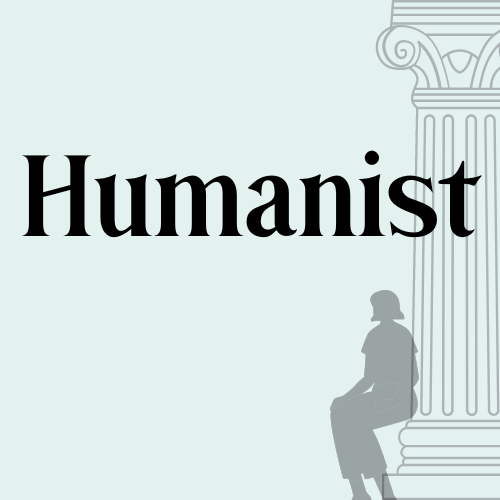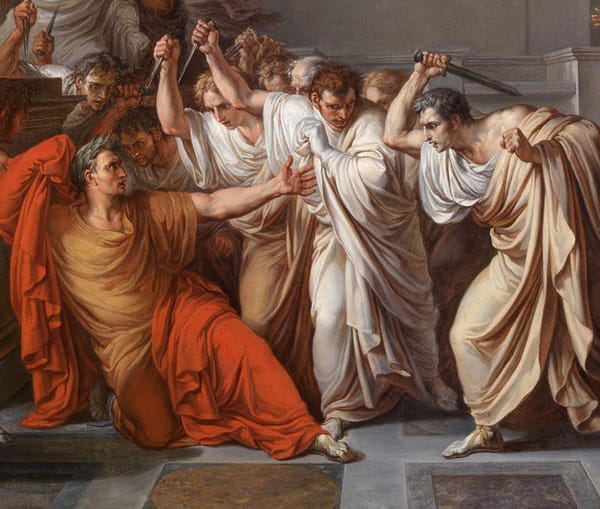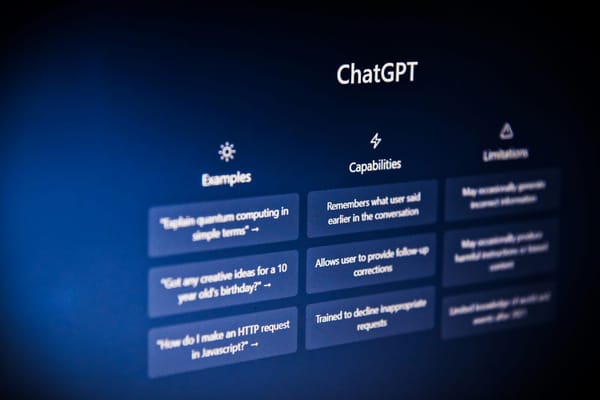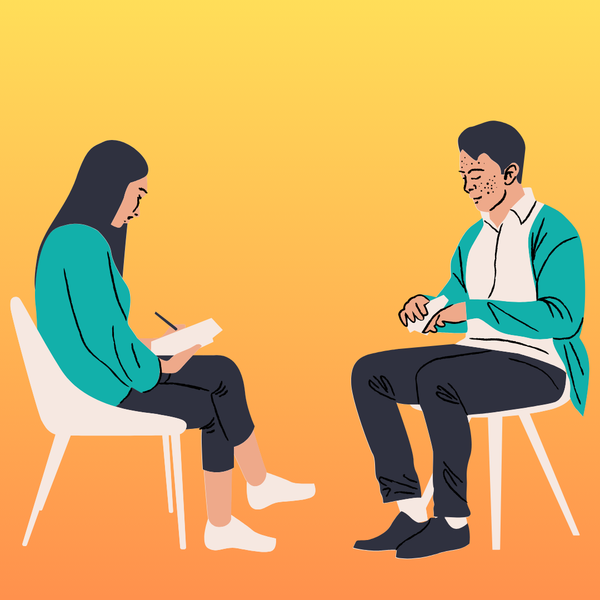Chasing the Dream of a Good Discussion
Discussion is an opportunity for students to practice communicating with each other and weighing judgments or proposed actions together, as they must if they are going to be citizens of a democracy. So discussion might be the single most important skill a student can learn in college.

Over the 4th of July weekend, I was at a barbecue with a lot of people I didn't know – and whose politics I didn't know. Scary stuff these days. So I was reticent about my own opinions, waiting for others to make the first move in disclosing their views, saying just enough to keep the conversation moving. It was totally unsatisfying. I reflected later that I wished I had asked more questions instead, leading with curiosity, learning not only about what they believed but why. What were they reading or watching, to keep up with the news or to escape from it? How did where they lived or worked inform their perspective on the world? And if we ended up talking about politics, who did they think was responsible for the state of our country (since the one thing we can all agree on is that it's terrible), and what did they think should be done to fix it, and by whom?
I confess, I also wish I'd been able to do more of this in the classroom while I was teaching. While I enjoyed lecturing and was pretty good at it (if I do say so myself), I was always aware that my skills as a discussion facilitator were not up to that same level. I knew the value of discussion for learning, and I genuinely enjoyed hearing my students' opinions and questions about the material we were studying, but I struggled to get them talking. At best, I'd get between a quarter and half the class to talk to me, one at a time, in front of the others, while I responded to each of them in turn. I'm not sure that can be described as a "discussion."
The sociology of classroom discussions
I was relieved to read in sociologist Jay Howard's 2015 Discussion in the College Classroom that mine are all very common experiences. Howard's book begins with a vignette all instructors dread: you see eyes glazing over (or even closing), so you try to ask a question to bring some energy into the room, only to be met with mildly hostile silence. Howard imagines the instructor's frustration: "With all the talk at faculty development workshops about the need to engage students in the classroom and how students supposedly both enjoy such pedagogies and learn more effectively when they are utilized, why doesn't it seem to work for you when theory meets the hard realities of classroom practice?" A failed discussion is so tremendously, painfully socially awkward.
It helps to have a sociologist's take on discussion facilitation, because at the end of the day, any discussion depends on social norms and group dynamics. And the reason so many of us have found ourselves presiding over bad discussions, according to Howard and other scholars, is that most students come into most classrooms with expectations of "civil attention," polite but passive, rather than participation. Research has consistently shown that 5-8 students are likely to do all or almost all of the talking in any class, regardless of size, even though the rest of the students resent them a little. Composition professor Mary Reda wrote a whole book as well as a 2010 article for the Chronicle of Higher Ed about her exploration of why students are silent, and it's not (always) because they don't care about the course material.
Howard talks about the crucial importance of breaking those norms and establishing new ones from the first minutes of a semester, if you're going to expect lively discussion. Note: Learning students' names is an absolute requirement.
Setting norms doesn't have to involve a lot of manipulation or theater: it's actually better if you come right out and tell students what you're doing and why. This is especially important to support autistic and neurodivergent students. University of Illinois scholar Margery Osborne writes about an experiment she conducted with education grad students in a lab course, where passive attention to lectures was not going to cut it. Instead of just telling them about different pedagogical methods, she modeled them, and then invited questions and reflections about what worked (or didn't) and why. She told her students from Day 1 that this was the expectation, since "The students and I must construct this environment together because in a class where the discourse is the focus, creating and perpetuating an environment that nurtures conversation must be mutual. Such a conversation is symmetric, requiring two (or more) parties to participate willingly and freely." She also thought about her own role in establishing that norm:
In order to demand that students think hard and value this process, I have to demonstrate that I respect and value others' questioning and evaluation. The first few meetings of the class are, for me, filled with the tension between creating a place where ideas can be safely aired and questioned and creating a place where we can push, confront, and challenge one another's ideas. (Margery Osborne, “Teaching Through Conversation")
Why bother getting vulnerable with your professor (even anonymously) or reflecting uncomfortably on your own struggles to learn, if you don't even think the professor will care?
In Discussion as a Way of Teaching, the great pedagogy scholar Stephen Brookfield urges instructors to verbally appreciate students' contributions, especially when a student offers negative feedback or a correction to the instructor (often in an anonymous exit ticket or questionnaire). It's important to make it clear that students' input is not only expected but valued, even if you are privately fuming. He has even brought in colleagues to debate a question with him, to show that disagreement, dissent, and conflicting perspectives are an expected part of the game.
When I read Osborne's article, I thought about how my teaching evaluations in seminar courses used to have a weird divide: some students said there was too much lecturing, and some said there was too much discussion. I figured that meant I had struck a good balance. But I realize now that it also means that the students did not know why I was using both modes of learning in the same course, or why I was choosing one over the other at any given point. We weren't on the same page at all about our expectations of what was supposed to be happening in that room.
What is discussion good for?
If discussion involves such an intricate social dance and constant facilitation and adjustment, why bother? Lecturing is a lot simpler, easier to plan for and to control, a lower cognitive lift. In fact, there are many learning scenarios in which lecture is preferable to discussion. If you need to take in new information, hearing a lecture (with breaks!) is efficient.
But in scenarios when there are many potential right answers, many factors at play, multiple perspectives to consider, or reductive assumptions to unpack, then discussion is the right mode of learning. When you need to know new facts, lecture makes sense; if you need to understand new ideas (or old ideas in new ways), that can only be achieved through more active participation.
I'm not talking here about just asking students basic recall questions or fishing for the correct answer to a question (Anyone? Anyone? The Hawley Smoot Tariff Act?); I'm talking about extended dialogue about big, open-ended questions.
Howard cites research that shows that discussion makes students more committed to a course, increasing their sense of motivation and their grades, and helps them retain information longer. Likewise, Brookfield lists 15 benefits of discussion, including building skills of "synthesis and integration." But most of his list has to do with building capacities to listen to, appreciate, evaluate, and dialogue with other people. In that sense, discussion might be the single most important skill a student can learn in college. The introduction to the book was written by Stephen Preskill, who waxes lyrical in an incredible manifesto about the link between discussion and democracy itself:
To see a topic come alive as diverse and complex views multiply is one of the most powerful experiences we can have as learners and teachers. In a discussion where participants feel their views are valued and welcomed, it is impossible to predict how many contrasting perspectives will emerge or how many unexpected opinions will arise. In revealing and celebrating the multiplicity of perspectives possible, discussion at its best exemplifies the democratic process. All participants in a democratic discussion have the opportunity to voice a strongly felt view and the obligation to devote every ounce of their attention to each speaker’s words. In this minidemocracy, all have the right to express themselves as well as the responsibility to create spaces that encourage even the most reluctant speaker to participate. Discussion and democracy are inseparable because both have the same root purpose—to nurture and promote human growth. ...Discussion is one of the best ways to nurture growth because it is premised on the idea that only through collaboration and cooperation with others can we be exposed to new points of view. This exposure increases our understanding and renews our motivation to continue learning. In the process, our democratic instincts are confirmed: by giving the floor to as many different participants as possible, a collective wisdom emerges that would have been impossible for any of the participants to achieve on their own.
Preskill draws in this essay on the tradition of critical pedagogy, citing scholars like John Dewey, Paulo Freire, and Henry Giroux. Giroux has published an enormous amount of cultural criticism in his career, much of it focused on the neoliberal refashioning of education and culture. Since the Reagan era, Giroux has criticized how various U.S. administrations (and society more broadly) have increasingly treated teachers as cogs in a capitalist content delivery machine that pops out ready-made workers, ready to do their utmost to earn wages and consume goods. But what about educating good citizens, not mere consumers? What about their ability to sustain healthy relationships with other people, not merely with money and things?
A teacher, Giroux argues, is not merely a skilled professional worker but is a powerful public intellectual, a key figure in society who is preparing young people to understand the world around them, to envision how the world could be better and how to make it so, and to be a good member of a broader community. Discussion is a key part of critical pedagogy, because it's an opportunity for students to practice communicating with each other and weighing judgments or proposed actions together, as they must if they are going to make the world better together.
As critical educators we must create classroom social relations that allow students to speak and to appreciate the nature of difference as both a basis for democratic tolerance and as a fundamental condition for critical dialogue and the development of forms of solidarity rooted in the principles of trust, sharing, and a commitment to improving the quality of human life. In this case, the notion of voice is developed around a politics of difference and community that is not rooted in simply a celebration of plurality, but rather in a particular form of human community that encourges [sic] and dignifies plurality as part of an ongoing effort to develop social relations in which all voices in their differences become unified in their efforts to identify and recall moments of human suffering and the need to overcome the conditions that perpetuate such suffering. (Giroux, "Citizenship, Public Philosophy, and the Struggle for Democracy," 1987)
Is this wildly idealistic? Yes! Brookfield says, to my profound relief:
One reason teachers feel their discussion sessions are not working is because they have hopelessly inflated images of what a “successful” discussion looks like. In these visions of “good” discussion, silence never fills the room. The conversation focuses only on relevant issues, at a suitably sophisticated level of discourse. Talk flows scintillatingly and seamlessly from topic to topic. Wildean epigrams dart impishly across the room, interspersed with haikus of great profundity. Everyone listens attentively and respectfully to everyone else’s contributions. People make their comments in a way that is informed, thoughtful, insightful, and unfailingly courteous. The Algonquin round table or a Bloomsbury dinner party pales in comparison to our febrile imaginings.
The reality is that discussions like this rarely, if ever, happen. Learning to participate in discussion is a lifelong learning project, and most of us go to our graves feeling we still have a lot to learn. Compounding the problem is the fact that two of the most common models of public discourse we have available to us—political debate and television or radio talk shows—foster an image of conversation as loud, dichotomous, oppositional, and inflammatory. Students who see themselves as members of minority groups and whose past experiences have produced legitimate fears about how they will be treated in an academic culture may reject these models and elect for silence. Students who are introverts or who need time for reflective analysis may find the pace of conversation intimidating. If students have suffered public humiliation in previous discussions or if teachers mandate participation without demonstrating why students should take the process seriously, discussion will not work. (Brookfield, Discussion as a Way of Teaching)
At least my weaknesses as a discussion facilitator only represented an early stage in a lifelong learning process – but how to get better at it? Brookfield's book has a ton of good ideas, which I'll summarize briefly, but practicing it (badly) is probably the most important part, unfortunately.
Laying the groundwork
I've already mentioned establishing a norm of discussion from Day 1 of the semester, and telling students explicitly that discussion will be an invaluable part of their learning in the course. Assigning a portion of their grade to participation also helps to convey how important it is. Elizabeth Barkley and Claire Major, in Student Engagement Techniques: A Handbook for College Faculty, recommend telling students that you're not grading them for speaking per se; you're grading them for showing their learning, pursuing their learning, or supporting the learning of their classmates.
In the early days of a course, students don't have to be discussing course material yet – in fact, it might be better if they aren't. If they're talking instead about themselves, they are building community in a way that will make them more comfortable talking to each other later on. It's socially risky, as I felt at that 4th of July barbecue, to volunteer political opinions or to disagree with others, especially among strangers. People with marginalized or oppressed identities are more averse to this risk, for good reasons. The more comfort and familiarity and community they feel with their classmates, the more conversation will flow.
What could this look like? I've written about community-building on the first day before, through surveys, and about setting ground rules for peer workshops, which is relevant here – in that second post, I also weighed the value of putting students together in groups of friends or by interest or identity, instead of trying to make them leave their comfort zones, at least to start out. Erika Kustra outlines an exercise in active listening in her Leading Effective Discussions workbook, since it's a crucial prerequisite for good discussion as well as a community-builder. Maybe you would want your students to practice offering hot takes about low-stakes things, and challenging each other about them (within boundaries), to set that norm for more substantive discussions later.
Comfort level is important. With my friends, I love talking or even arguing about any topic that comes up, but the classroom has rarely felt to me like a space (or container, to borrow adrienne maree brown's term) where conversation can flow freely. Think about a good conversation about a challenge in your work with a colleague, standing around the water cooler or working in a grad student office, or at a workshop. Now think about a conference where people are jumping up to offer "more of a comment than a question" and performing their expertise – sometimes at the speaker's expense – instead of genuinely delving into the topic at hand to understand it. Both scenarios involve people talking to each other about academic subjects, but only one really qualifies as a "discussion" that advances learning. And you're more likely to get that among a smaller group or even one-on-one, with people already in community with you.
Some practical tips
For discussion prompts and discussion-based activities, Jennifer Herman and Linda Nilson's edited volume Creating Engaging Discussions: Strategies for "Avoiding Crickets" in Any Size Classroom and Online is a great place to start – there's even a quick reference guide at the beginning. I think the "change-your-mind debate" and Mary Jo Festle's deliberative dialogue activity sound especially worthwhile. Barkley and Major suggest moving through a series of prompts that are progressively more challenging, so that all students feel able to participate in the early stages. Brookfield and Preskill also followed up Discussion as a Way of Teaching with The Discussion Book: 50 Great Ways to Get People Talking. And you could check out my post about peer workshops, which are discussion-based.
I like to make a separate slide in my Powerpoint presentations with a discussion prompt or question on it, instead of just verbally asking a question. Changing slides refreshes students' attention, and if their attention wanders or they start down a new train of thought during the discussion and need to come back, the slide offers a concrete orientation point. It also reminds me to stop for discussion myself.
Participating in a discussion feels like a juggling act to me, and to many students. It takes me awhile to think through new ideas or formulate questions, and I process things better by writing than by speaking (hence this blog). While I'm thinking, I am often not listening to other people's contributions very carefully – and if I'm trying to formulate something to say out of all these slippery new ideas, I am often not listening to other people at all. For introverts like me, a minute (or several) to collect our thoughts and write them down in what's sometimes called a "minute essay" or the "think" part of a "think-pair-share" protocol can make a big difference in participation in a discussion. Students can write in response to an open-ended question, or identify the "muddiest point," biggest remaining question, or most important takeaway from a discussion or lecture so far. At the beginning of a class session or lecture, you can pose a question that will be discussed later, to lay the groundwork. Or you can identify a question you've set out to answer, and tell the students you'll ask them later whether you succeeded. Brookfield often relies on Critical Incident Questionnaires, a form of "exit ticket" or student survey allowing students to offer feedback and questions on what they've been learning and how it's going for them.
Another boon to introverts during discussion? Silence. Wait a good 15-20 seconds for someone to raise their hand, if you have to (it will feel like forever). As the instructor, you can just call a time out for everyone to reflect for a minute. Or you can just not talk. You can pause to collect your own thoughts, especially when things start getting tense or dicey. You can tell everyone to take a deep breath, or 5. You don't have to have a brilliant follow-up question or critique on the tip of your tongue; you can think about it for a minute. That is a great thing to model for adolescents!
Putting students on the spot
One professor in my freshman year of college was a big believer in cold calling, and she trained me to put my hand in the air and verbalize the first semi-cogent thought that popped into my head. That made me much more of a loudmouth in seminars ever after, in order to avoid being called on when I didn't have a semi-cogent thought to offer at all.
Despite knowing from my own experience the transformative potential of cold calling, I still can't make myself do it. It feels aggressive to me, potentially disrespectful, and counter to the socialization I've received as a young(ish) woman. According to Jay Howard, cold calling or direct questioning accounts for less than 15% of interactions in college classrooms in most disciplines, according to several studies, especially at the undergraduate level (graduate students are more often held to account this way). Howard has some scripts to help:
- "I’ve heard some great ideas from you so far, now I want to hear more from y’all who haven’t spoken yet."
- "[Name] has gotten us started on the right path here. Who can add to what they have said to help us take the next step and explore the idea a bit more?"
I can envision thanking the students who jumped in first, taking a moment to appreciate them, and then letting the others know: we shouldn't all just accept this as the norm forever, please. You can also put students' names in a jar or on popsicle sticks and choose at random; at least then you're displacing responsibility for the aggression onto an inanimate object.
And Herman and Nilson suggest a few options for ground rules for dominant talkers or "compulsive communicators":
- A student who contributes cannot speak again until at least three other students have contributed;
- Give talkative students three pennies. They have to turn in a penny for each comment they make and can no longer comment when out of pennies;
- At the beginning of the course, inform your students that they will be recording and evaluating their contributions. On a form you distribute, students report specifically what and when they contributed to class and how their contribution advanced learning. Request two self-assessments during the course in which students identify their strengths and ways to improve both the quantity and quality of their participation.
Mary Reda suggests:
- Ask that students frame their contributions in response to at least one other student's comment.
If you're doing exit tickets or Critical Incident Questionnaires (see above), you can ask students how they're feeling about the equality of participation and contributions from the class. Chances are, they're frustrated about a dominant talker or two, but now they aren't speaking themselves because inertia and classroom norms are standing in their way. A little reflection might help them to overcome that (minor) obstacle and start weighing in.
Brookfield also makes the brilliant (in my opinion) suggestion of assigning discussion roles to students at random and in turns: clarification or elaboration seeker, unspoken assumption hunter (love this), contribution appreciator, summarizer, disagree-er, devil's advocate, or theme synthesizer. This way, each student is empowered to try out that role, even if it doesn't come naturally to them.
bell hooks, in Teaching to Transgress, writes about her rationale for requiring students to read journals aloud in her courses:
A distinction must be made between a shallow emphasis on coming to voice, which wrongly suggests there can be some democratization of voice wherein everyone’s words will be given equal time and be seen as equally valuable (often the model applied in feminist classrooms), and the more complex recognition of the uniqueness of each voice and a willingness to create spaces in the classroom where all voices can be heard because all students are free to speak, knowing their presence will be recognized and valued. This does not mean that anything can be said, no matter how irrelevant to classroom subject matter, and receive attention—or that something meaningful takes place if everyone has equal time to voice an opinion. In the classes I teach, I have students write short paragraphs that they read aloud so that we all have a chance to hear unique perspectives and we are all given an opportunity to pause and listen to one another. Just the physical experience of hearing, of listening intently, to each particular voice strengthens our capacity to learn together. Even though a student may not speak again after this moment, that student’s presence has been acknowledged.
Hearing each other’s voices, individual thoughts, and sometimes associating theses voices with personal experience makes us more acutely aware of each other. That moment of collective participation and dialogue means that students and professor respect—and here I invoke the root meaning of the word, “to look at”—each other, engage in acts of recognition with one another, and do not just talk to the professor. Sharing experiences and confessional narratives in the classroom helps establish communal commitment to learning. These narrative moments usually are the space where the assumption that we share a common class background and perspective is disrupted. (hooks, Teaching to Transgress)
Going around the room and having students read something that they have written (sometimes called "warm calling") has many benefits, including the inclusivity and democratization that hooks emphasizes: it's also a way of supporting introverts (like me) and encouraging them to participate in discussions more, and it helps all students to gather their thoughts and make more meaningful contributions.
hooks also gets at the main reason for taking the risk of facilitating discussion: you never know what people are thinking until you ask, and you might just learn something new – or better yet, arrive at a new understanding of something you thought you knew. And bear in mind that Stephen Brookfield, even after that dreamy ideal vision of discussion-based learning, says that sometimes it will not work because those students aren't up for it on that day, and it's not your fault. No, really.
Recommended reading
Giroux, Henry A. 2016. Schooling and the Struggle for Public Life: Democracy’s Promise and Education’s Challenge. Updated edition. Routledge.





